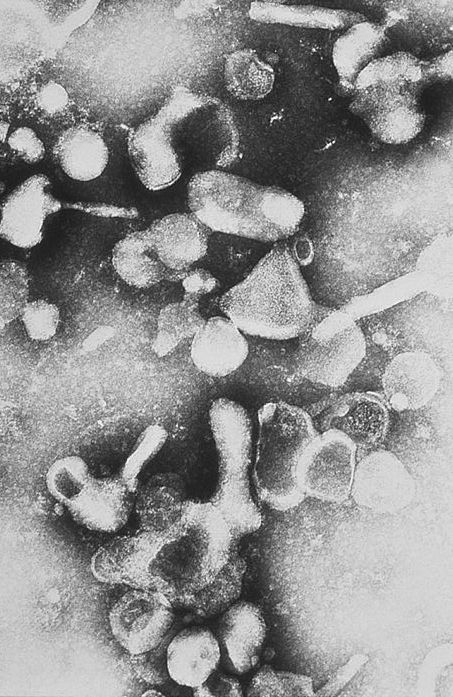Difference between revisions of "Category:Retroviridae"
Jump to navigation
Jump to search
m (Text replace - "Category:To_Do_-_Viruses" to "Category:To_Do_-_Clinical/Viruses") |
|||
| Line 38: | Line 38: | ||
| − | [[Category: | + | [[Category:Viral Organisms]] |
| + | [[Category:To_Do_-_Clinical/Viruses]] | ||
Revision as of 09:26, 24 August 2010
Retroviridae
Retroviruses are persistent, non-cytopathic, systemic viruses that give rise to secondary disease, such as tumors, immune-complex disease, or immunosuppression.
Content
BLV-HTLV retroviruses
- Bovine Leukosis Virus
Morphology
- Fragile, enveloped RNA viruses with roughly spherical spike proteins
- Genome has 3 genes:
- gag: group-specific antigen coding gene, encodes capsid proteins
- pol: encodes reverse transcriptase (RT) and integrase
- env: encodes envelope spikes, and can be used in diagnosis and subunit vaccines
- Both ends of genome show a promoter (LTR: long terminal repeat)
Antigenicity
- Group-specific antigens (gag's) are shared by all isolates of each virus
- This can be exploited by diagnostic tests
- Lentiviruses show variation by mutation, making vaccination difficult
Virulence and Pathogenesis
- Replication involves integrating into the host cell genome:
- Uncoating to release RNA and RT
- +RNA transcribed to -DNA by RT
- -DNA becomes circular dsDNA and is integrated into host chromosome by integrase
- DNA codes for viral proteins using cellular organelles and enzymes
- Because of this technique, virus replication is much slower, and retroviruses can remain latent
- Tumor production takes 2 forms:
- Viruses can carry oncogenes within their genome --> tumor production occurs quickly
- Insertion of the viral LTR switches on proto-oncogenes in the host cell genome --> tumor production can take years
Subcategories
This category has the following 3 subcategories, out of 3 total.
Pages in category "Retroviridae"
The following 4 pages are in this category, out of 4 total.
